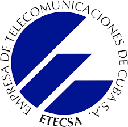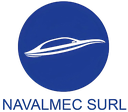Executive Secretary

21st International Symposium on Electrical Engineering
SIE 2025
Abstract
In poor countries, small-scale poultry farming systems play a fundamental role in supplying poultry products and boosting the sector. Artificial incubation is a fundamental element in the production process and requires precise control of multiple parameters to maximize hatchability and chick quality. This article focuses on the electronic design of a modern automatic incubator. Based on the principle of open-source hardware and software, the ESP32 is used as the CPU. Key factors affecting embryonic development are controlled: temperature, relative humidity, turning, lighting, and ventilation. The Adafruit SCD-30 sensor is used to measure temperature, relative humidity, and CO2 levels. This design will allow for the application of photoincubation techniques, as it incorporates the option of green (518 nm) lighting. Temperature control is achieved using a PID controller. The humidifier will be 113 kHz ultrasonic. Relative humidity and ventilation are controlled using an ON-OFF switch. Data will be displayed on the 3.5-inch ili9488 TFT touchscreen. Producers can also select five incubation profiles: a standard profile (37.8°C, 55% RH), three profiles incorporating green light (518 nm) photoincubation in different cycles (23L:1D, 12L:12D, 16L:8D), and a profile with intermittent heat treatment (39.5°C for 12 hours/day, starting on day 7).
Resumen
En los países pobres los sistemas avícolas a pequeña escala desempañan un rol fundamental para suministrar productos avícolas y reimpulsar el sector. La incubación artificial es un elemento fundamental en el proceso productivo y requiere un control preciso de múltiples parámetros para maximizar la eclosión y la calidad de los pollitos. Este artículo se enfoca en el diseño electrónico de una incubadora automática moderna. Partiendo del principio de hardware y software libre se emplea el ESP32 como CPU. Se controlan los factores clave que afectan el desarrollo embrionario: temperatura, humedad relativa, volteo, iluminación y ventilación. Para medir temperatura, humedad relativa y nivel de CO2 se utiliza el sensor Adafruit SCD-30. Con este diseño se pondrá aplicar técnicas de foto-incubación pues incorpora la posibilidad de iluminación (verde-518 nm). El control de la temperatura se realiza mediante un controlador del tipo PID. El humidificador será ultrasónico de 113kHz. La humedad relativa y la ventilación se controlan mediante técnica de ON-OFF. La visualización de los datos será a través de la pantalla táctil TFT ili9488 de 3.5 pulgadas. A demás, se proponen cinco perfiles de incubación que podrán ser elegidos por el productor: un perfil estándar (37.8°C, 55% HR), tres perfiles que incorporan foto-incubación con luz verde (518 nm) en diferentes ciclos (23L:1D, 12L:12D, 16L:8D), y un perfil con tratamiento térmico intermitente (39.5°C durante 12h/día desde el día 7).
About The Speaker

Dr.C Luis Enrique Hernandez Morales

Discussion


 Bronze
Bronze